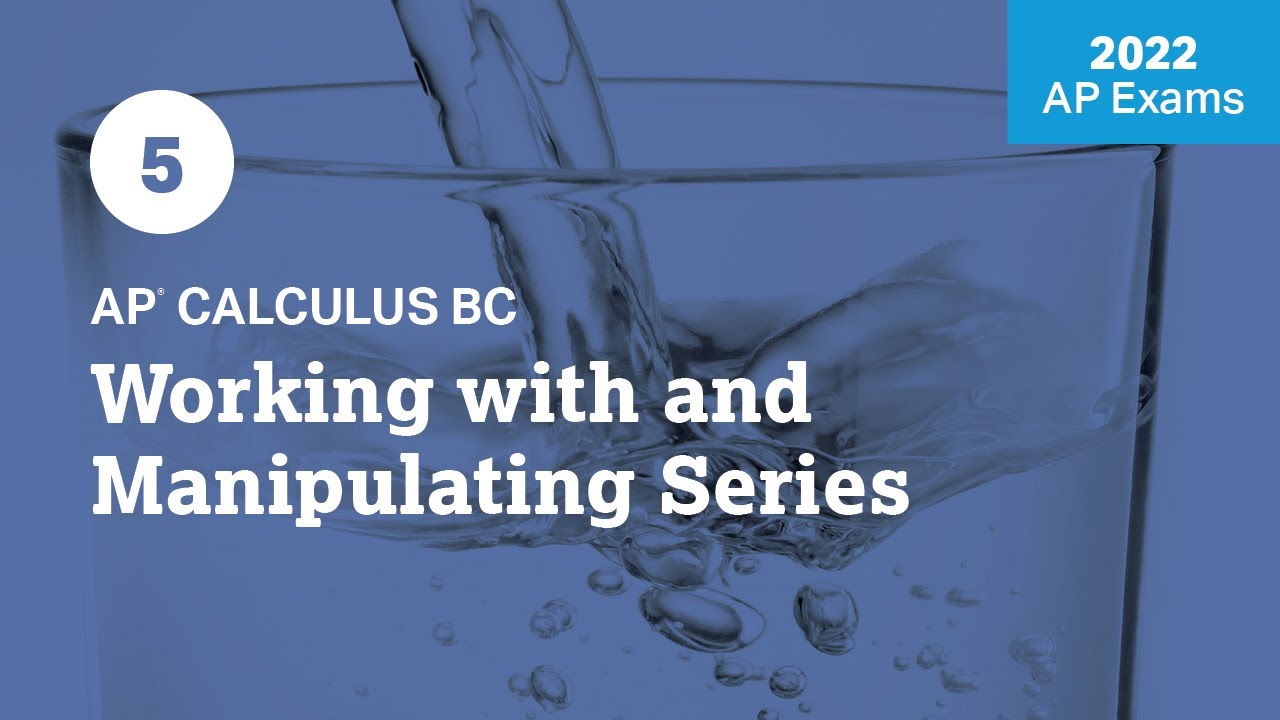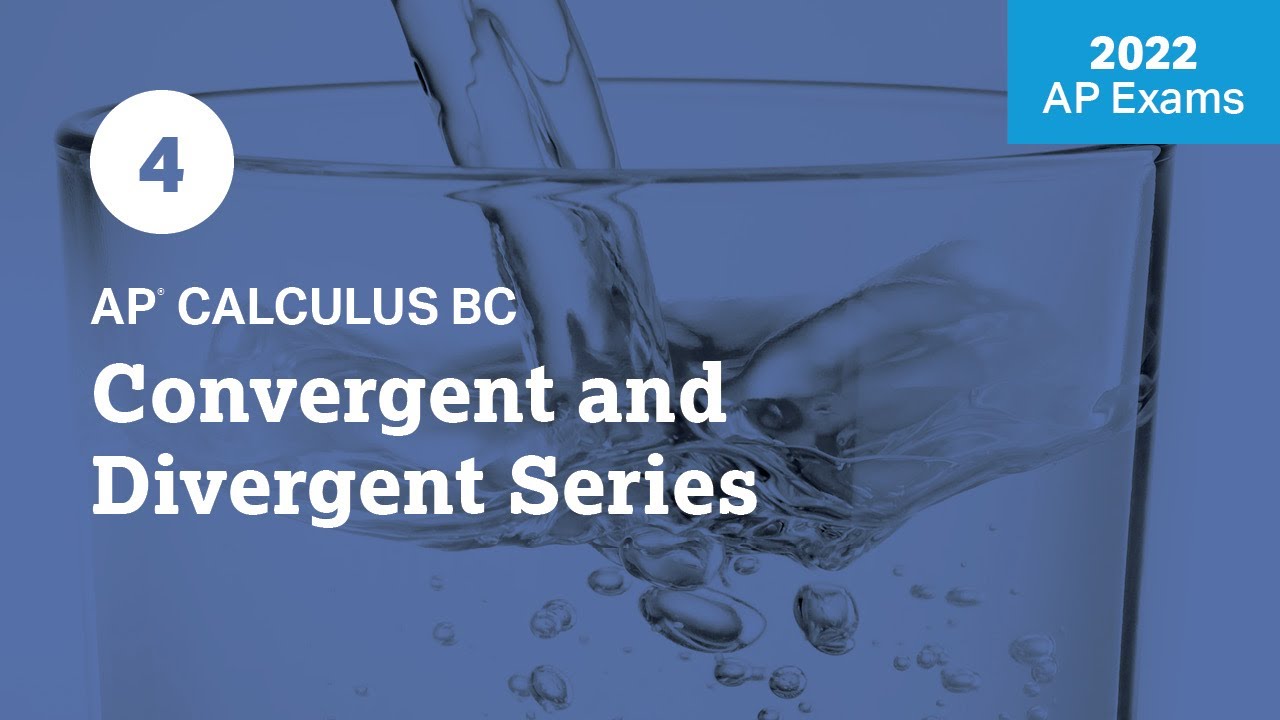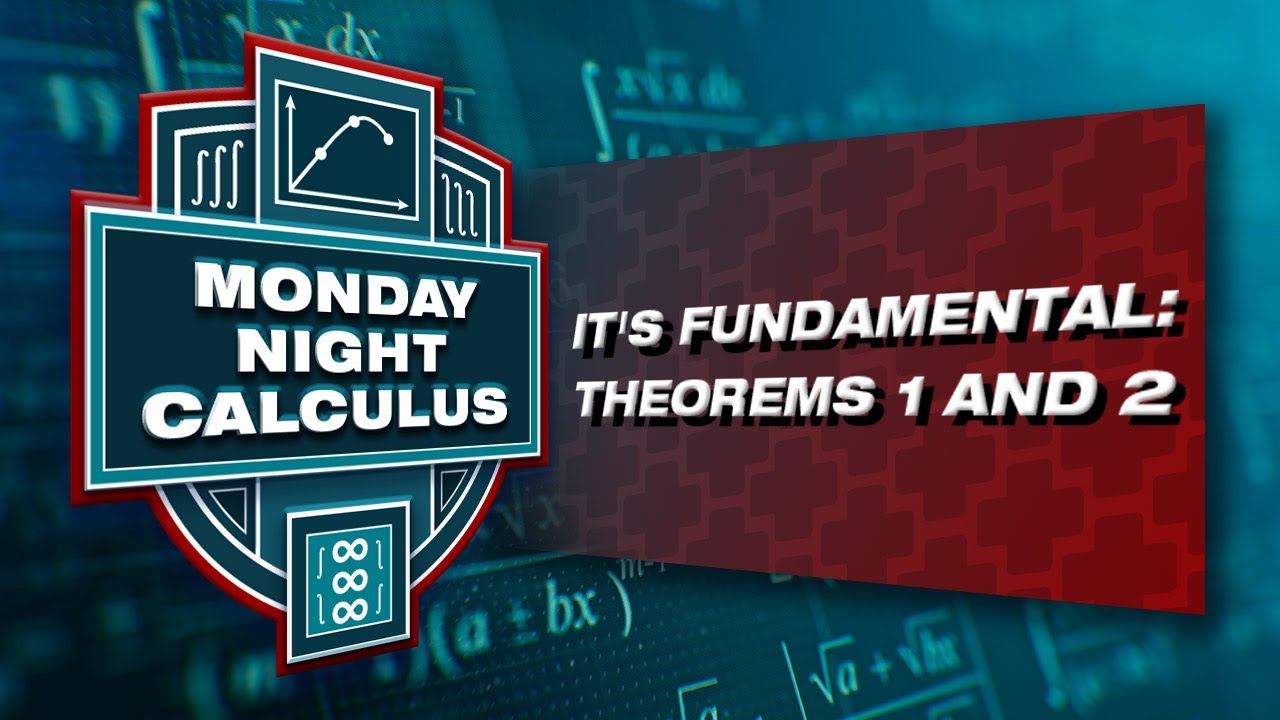2022 Live Review 3 | AP Calculus BC | Taylor Polynomials
TLDRIn this engaging video, the hosts delve into the intricacies of Taylor and Maclaurin polynomials, offering valuable insights and strategies for tackling calculus problems. They emphasize the importance of understanding the general form of the equation, calculating derivatives, and applying the fundamental theorem of calculus. The session is packed with practical examples, including working with graphs, evaluating derivatives, and using Euler's method. The hosts also provide tips for AP exam success, such as writing out equations and staying organized to avoid common mistakes.
Takeaways
- 📚 Taylor and Maclaurin polynomials are essential topics in calculus BC, with applications on the AP exam.
- 🎯 The general form of a Taylor polynomial is crucial for solving problems and should be written down as a first step.
- 🔍 Always verify the center of the polynomial (a or c) when working with Taylor series to ensure accuracy.
- 📈 When dealing with derivatives in Taylor polynomials, remember to include the correct factorial in calculations.
- 🤝 Collaborative problem-solving with peers can enhance understanding and provide different perspectives on tackling calculus challenges.
- 📊 Graphs and tables provided in exam questions often contain all the necessary information to solve problems, so pay close attention to details.
- 🛠 Euler's method is a technique used for approximating solutions to differential equations, which can be applied in various contexts.
- 🔗 Taylor polynomials connect to other calculus topics, so be prepared to make connections between seemingly unrelated concepts.
- 📝 When solving free response questions, keep your work organized and clearly labeled to ensure full credit is awarded.
- 🎓 The AP exam often combines topics in innovative ways, so practice with a variety of problems to be well-prepared.
- 🚀 Continuous practice and review of materials, including additional problems, can lead to better performance on the AP exam.
Q & A
What is the main topic of discussion in this video transcript?
-The main topic of discussion in this video transcript is Taylor polynomials and Maclaurin polynomials in the context of calculus, specifically their application and interpretation in various problems.
Who are the speakers in this transcript?
-The speakers in this transcript are Brian, an educator from Speedway High School in Indiana, and Tony Record from Avon High School.
What is the significance of Taylor polynomials and Maclaurin polynomials in calculus?
-Taylor polynomials and Maclaurin polynomials are significant in calculus as they provide a way to approximate functions using polynomials. They are particularly useful for making predictions and understanding the behavior of functions near a given point.
What is the general form of a Taylor polynomial?
-The general form of a Taylor polynomial centered at 'a' is given by: f(x) ≈ T_n(x) = f(a) + f'(a)(x-a) + f''(a)/2!(x-a)^2 + ... + f^n(a)/n!(x-a)^n, where f^n(a) represents the nth derivative of function f evaluated at 'a'.
How does the speaker suggest approaching problems involving Taylor polynomials?
-The speaker suggests first writing down the general form of the Taylor polynomial, identifying the function to be approximated, the center of the polynomial, and the degree of the polynomial. Then, calculate the necessary derivative values and plug them into the general form to solve the problem.
What is the role of the derivative in constructing a Taylor polynomial?
-The derivative plays a crucial role in constructing a Taylor polynomial as it provides the coefficients for each term in the polynomial. The nth derivative of the function evaluated at the center 'a' determines the coefficient for the term involving (x-a)^n in the polynomial.
What is the difference between a Taylor polynomial and a Maclaurin polynomial?
-A Maclaurin polynomial is a special case of a Taylor polynomial that is centered at 0. Essentially, a Maclaurin polynomial is a Taylor polynomial with 'a' equal to 0.
How does the speaker describe the process of finding the third degree Taylor polynomial for f(x) = ln(x) centered at x = 1?
-The speaker describes the process as first identifying the function to be approximated (ln(x)), the center of the polynomial (x = 1), and the degree (3). Then, calculate the first, second, and third derivatives of the function, evaluate them at the center (x = 1), and plug these values into the general form of the Taylor polynomial.
What is Euler's method mentioned in the transcript, and how is it used in this context?
-Euler's method is a numerical technique used to find approximate solutions to ordinary differential equations. In the context of the transcript, it is used to approximate the value of a function h(x) = f(3 - 4x) at x = 0, given the function f(x) and its derivatives.
What advice does the speaker give for students preparing for the AP exam regarding Taylor polynomials?
-The speaker advises students to practice with various problems involving Taylor polynomials, to be organized and clear in their work, especially when it comes to labeling and organizing their steps, and to remember that everything in calculus is interconnected, so they should be prepared to make connections between different topics.
What is the significance of the intermediate value theorem (IVT) and the mean value theorem (MVT) mentioned in the transcript?
-The intermediate value theorem (IVT) and the mean value theorem (MVT) are fundamental theorems in calculus that deal with the behavior of continuous functions. The IVT states that if a function is continuous on a closed interval [a, b] and k is any number between f(a) and f(b), then there exists at least one number c in the interval [a, b] such that f(c) = k. The MVT states that if a function is continuous on the closed interval [a, b] and differentiable on the open interval (a, b), then there exists at least one number c in the interval (a, b) such that the derivative of the function at c is equal to the average rate of change of the function over the interval [a, b]. These theorems are often used to solve 'existence' type problems in calculus.
Outlines
📚 Introduction to Taylor and Maclaurin Polynomials
The video begins with an introduction to Taylor and Maclaurin polynomials, emphasizing their importance in calculus. The speakers, Brian and Tony, express excitement about discussing these topics and preview the session's content, which includes reviewing basic concepts and working through several AP-style problems. They mention the availability of practice problems and highlight the significance of understanding Taylor polynomials for success in the AP exam. The introduction also includes a brief background of Tony's teaching credentials and a light-hearted mention of Brian's school mascot.
📈 Understanding the General Form of Taylor Polynomials
This paragraph delves into the general form of Taylor polynomials, explaining the process of finding the polynomial for a given function. The speakers discuss the importance of identifying the function to approximate, the center of the polynomial, and the degree of the polynomial. They provide a step-by-step guide on how to write down the general form and use it to solve problems. An example is given where they find the third-degree Taylor polynomial for the natural log function centered at x equals one, demonstrating how to calculate derivative values and plug them into the general form.
🔢 Working with Tangent Lines and Integration
The paragraph focuses on applying Taylor polynomials in different contexts, such as using tangent lines and integration. The speakers present a problem involving a graph of a function 'f' and a new function 'g' defined through integration. They explain how to find the second-degree Taylor polynomial for 'g' centered at x equals two, using the graph and the fundamental theorem of calculus. The process involves calculating derivatives and using the properties of integration to find the coefficients for the polynomial.
📊 Analyzing Numerical Tables and Graphs
This section discusses how to use numerical tables and graphs to construct Taylor polynomials. The speakers present a practice problem where selected values of a function 'f' and its derivatives are given, and the task is to find the value of the third-degree Taylor polynomial at x equals zero. They emphasize the importance of writing down the general form of the polynomial and carefully plugging in the given values to find the coefficients. The paragraph also touches on the potential for these problems to appear in multiple-choice or free-response formats on the AP exam.
🔄 Reverse Engineering Taylor Polynomials
The paragraph explores the process of working backwards from a given Taylor polynomial formula. The speakers present a problem involving a numerical table and guide the viewer through the steps of constructing the polynomial. They caution against common mistakes, such as omitting the factorial in the coefficients, and emphasize the importance of careful calculation and organization of steps. The section also introduces a problem where the value of the fourth derivative of a function 'f' at x equals negative one is sought, highlighting the need to apply the correct formula and order of operations.
📈 Graphing and Analyzing Taylor Polynomials
This section continues the discussion on Taylor polynomials with a focus on graphing and analysis. The speakers present a problem involving a graph of a function 'f' and explain how to determine why a proposed second-degree Taylor polynomial cannot equal a given expression. They discuss the importance of understanding the concavity and slope of the graph to correctly identify the second derivative. The paragraph also introduces a problem about identifying the correct third-degree Taylor polynomial centered at x equals negative three, emphasizing the need for careful analysis of the coefficients and the complete series.
🎓 Reviewing Common Mistakes and Notational Issues
The speakers review common mistakes and notational issues that students make when working with Taylor polynomials. They discuss the importance of including the correct factorial in the coefficients and the consequences of omitting it. The paragraph also highlights the need to be conscious of the series notation and how it differs from a polynomial. The speakers provide multiple-choice practice problems that allow students to apply their knowledge of Taylor polynomials and to be aware of the nuances that can lead to point loss on exams.
🔢 Applying Euler's Method and Existence Theorems
The paragraph concludes with a complex problem that combines Taylor polynomials with Euler's method and the introduction of a new function 'h'. The speakers guide the viewer through the process of using Euler's method to approximate the value of 'h' at x equals zero, emphasizing the importance of correct labeling and organization of work. They also introduce an open-ended question that hints at the use of existence theorems, such as the Intermediate Value Theorem or the Mean Value Theorem, which are often tested in free-response questions on the AP exam.
🎉 Wrap-Up and Future Sessions
In the wrap-up, the speakers summarize the key takeaways from the session on Taylor polynomials, highlighting the importance of checking the center and coefficients, using the general equation, and being prepared to make connections between topics. They preview upcoming sessions on Taylor series and Maclaurin series, and the concept of convergence. The speakers encourage students to practice with the provided materials and solutions, and express their excitement about the topics to be covered in future sessions.
Mindmap
Keywords
💡Taylor Polynomials
💡Maclaurin Polynomials
💡Derivatives
💡AP Calculus Exam
💡Euler's Method
💡Integration
💡Graphs and Tangent Lines
💡Factorials
💡Free Response Questions
💡College Board
Highlights
Introduction to Taylor Polynomials and Maclaurin Polynomials as favorite topics in calculus.
Excitement about discussing Taylor Polynomials and their applications in the AP exam.
Discussion on the importance of understanding the basics of Taylor Polynomials for success in the AP exam.
Mention of Tony Record from Avon High School and Brian Passwater from Speedway High School as educators.
Emphasis on the general form of the Taylor Polynomial equation as a key to solving problems.
Explanation of the process for finding the third-degree Taylor Polynomial for the natural log function centered at x=1.
Discussion on the AP level of problems and how they can lead to a score of 3, 4, or 5 on the exam.
Illustration of how to use the general form of the Taylor Polynomial equation through practice problems.
Clarification that Maclaurin Polynomial is a special case of Taylor Polynomial centered at 0.
Strategy for tackling complex problems by writing down the general form and plugging in values methodically.
Explanation of how to find the second-degree Taylor Polynomial for a given function using a numerical table.
Demonstration of working backwards from the Taylor Polynomial formula to find the fourth derivative of a function.
Use of graphical representation to explain why a given second-degree Taylor Polynomial cannot equal a specific expression.
Discussion on the importance of being careful with notational issues and avoiding series notation in polynomial questions.
Introduction to Euler's method for approximating the solution to a differential equation.
Explanation of how Taylor Polynomials can be connected to other calculus topics and are not isolated concepts.
Emphasis on the importance of organization and labeling in work, especially for free-response questions.
Transcripts
Browse More Related Video

2022 Live Review 5 | AP Calculus BC | Working with and Manipulating Series

2022 Live Review 4 | AP Calculus BC | Convergent and Divergent Series

2021 Live Review 2 | AP Calculus AB | Contextual & Analytical Applications of the Derivative

2021 Live Review 3 | AP Calculus BC | Everything You Need to Know About Parametrics

2022 Live Review 7 | AP Calculus BC | Working with Polar Equations

Fall 2023 MNC: It's fundamental - Exploring FTC 1 & 2
5.0 / 5 (0 votes)
Thanks for rating: